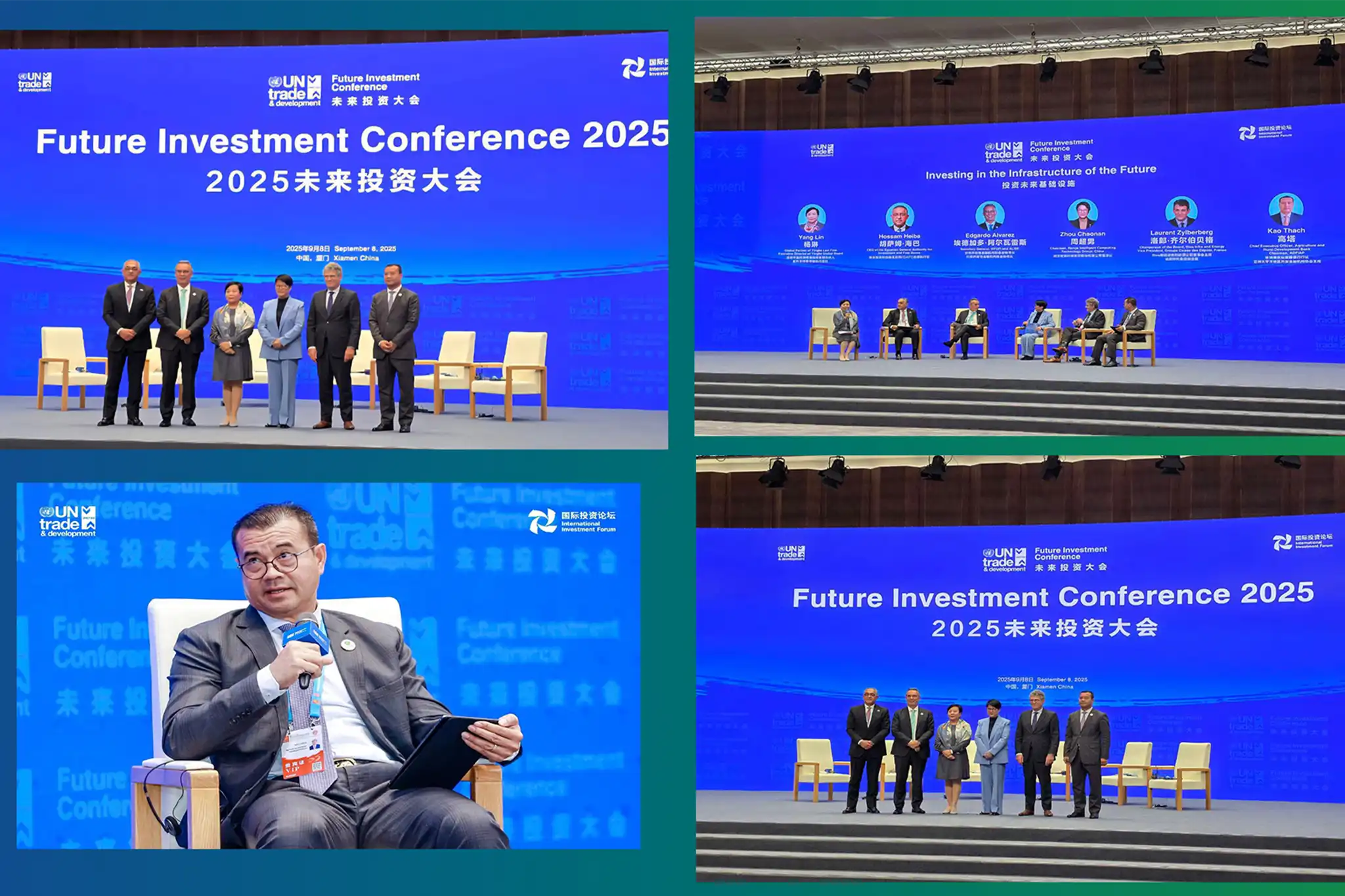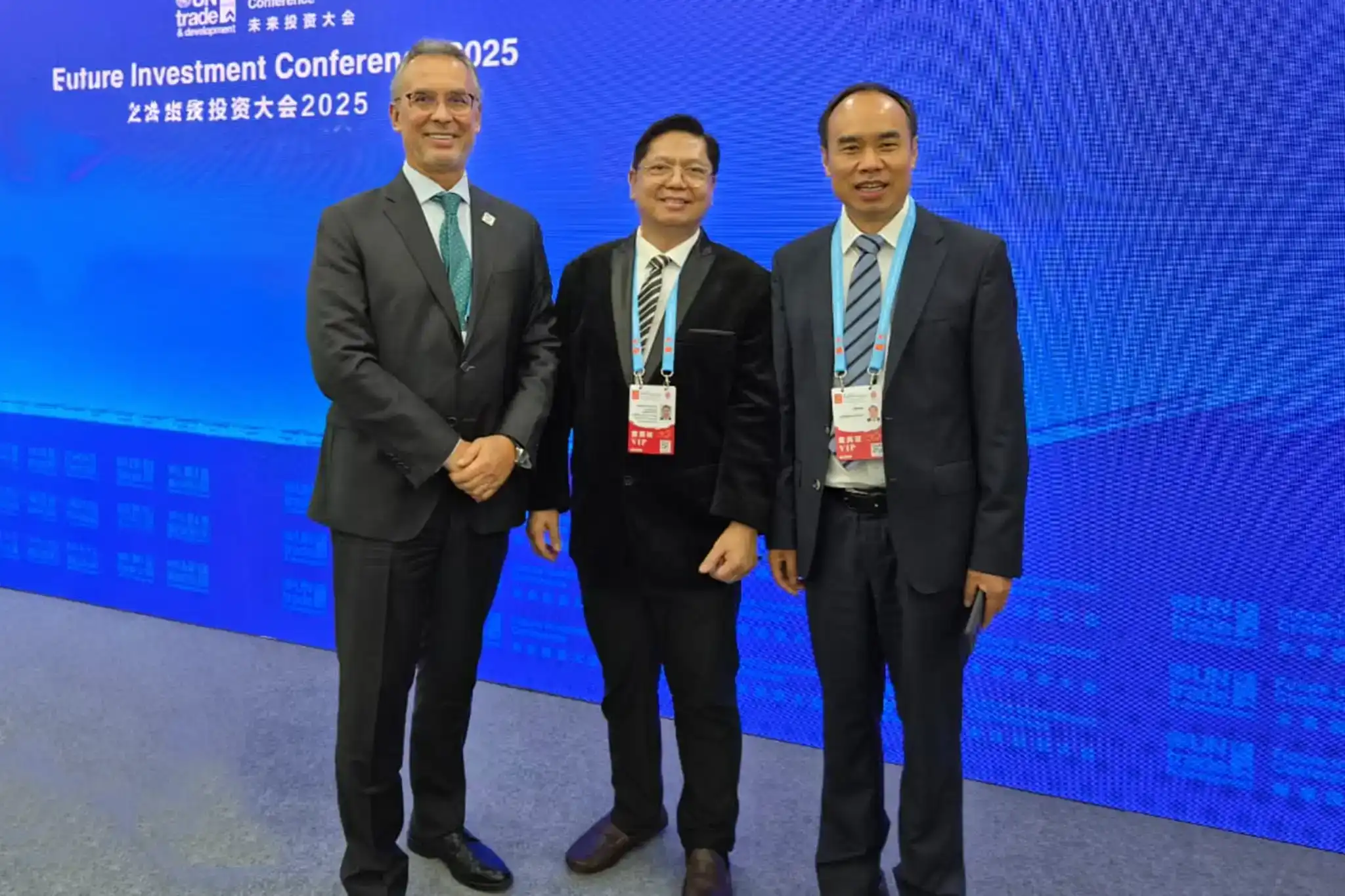- WFDFI Secretary General, Edgardo Alvarez, emphasized that sustainability is an indispensable condition to ensure long-term financial stability.
15 September, 2025 – The World Federation of Development Finance Institutions (WFDFI) participated in the Future Investment Conference 2025, held on September 7–8 in Xiamen, China, within the framework of the China International Fair for Investment and Trade (CIFIT 2025). Co-organized by UNCTAD and China’s Ministry of Commerce, the event brought together national leaders, senior executives, and development finance institutions from around the world to discuss investment trends, cross-border partnerships, and strategies for sustainable and resilient growth.
Representing WFDFI, Secretary General Edgardo Alvarez took part in the plenary session Investing for the Future, where he addressed the importance of infrastructure investment for the future, and in the roundtable discussion on Sovereign Wealth Funds, where he shared key challenges and opportunities in the evolving international investment landscape.
“From the perspective of development banking, sustainability is no longer an option; it is a condition for the long-term financial stability of countries,” stated Alvarez. He further underscored that the future of global investment must be built from the local level, with
inclusive productive development and strategic collaboration.
Alvarez’s participation, in his dual role as WFDFI and ALIDE Secretary General, strengthened WFDFI’s relations with multilateral organizations and development finance institutions worldwide.
The event also featured the participation of Kao Thach, President of the Association of Development Financing Institutions in Asia and the Pacific (ADFIAP), and Enrique Florencio, its Secretary General, who addressed issues related to strategic capital, innovation, sustainable financing, and the energy transition.
The dialogue sessions provided a global platform for WFDFI and ADFIAP to exchange best practices, explore co-financing opportunities, and strengthen the capacities of their member institutions.







